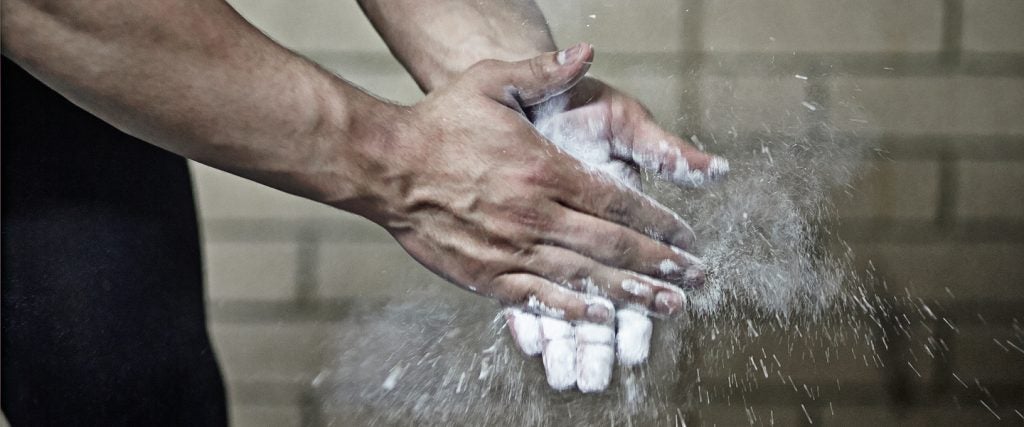Depending on the gym you’re a member of, you may spot some trainees visiting elevated bowls filled with powdery white chalk, exhibited in much the same way as some churches display holy water. In other instances, you might see people walking around with their own tiny individual “chalk balls.”
As odd as these chalk-toting utensils may seem, they’re not there so you can hurl their incredibly fine particles into the air before you start working out — a la LeBron James pre-tip-off. Nope, chalk is often provided to weightlifters to perform a critical service: When securing a firm grip on a barbell, dumbbell or other gym apparatus is absolutely vital, gym chalk is capable of absorbing all of the excess moisture on your hands and eliminating the likelihood that a bar is going to escape from your grasp.
Should I be using gym chalk?
Potentially. Inside of a gym’s walls, you’re most likely to see gym chalk utilized on the powerlifting platform, where exceptionally heavy weightlifting is usually being performed, or where Olympic-style lifts are being practiced. It’s important to make the distinction between powerlifting and Olympic-style lifting, because they qualify as two similar, but entirely distinct sports. Powerlifting tabulates a total score based on your performance on the bench press, squat and deadlift, while Olympic weightlifting collects the scores from only two events (the snatch and the clean-and-jerk).
Variations of the Olympic weightlifting events don’t need to be performed with exceptionally heavy weights in order to be deemed chalkworthy. In both the snatch and clean-and-jerk events, the weight is being rocketed off the ground exceptionally fast, and your feet are literally leaving the ground in order to maximize your propulsive force. Even a slip with a 25-pound weight on each side of a standard bar would send 95 pounds barreling through the air at eye level, possibly inducing a fatal accident at a nearby squat rack, or smashing through the glass partition separating the powerlifting platform from the adjacent spin class.
Well, good news: I’m not doing Olympic weightlifting movements.
The chalk may still be beneficial to you. For example, gymnasts are required to grip and regrip surfaces like vaulting platforms, suspended rings, balance beams, parallel bars, high bars and pommel horses. Not only will slips from any of these apparatuses result in a loss of points, but it can potentially bring them crashing to the matted floor at perilous angles.
Now, before you tell me that you’re not engaging in high-level gymnastics either, it’s worth noting that sudden shifts of body weight brought about by some popular CrossFit movements — like kipping pull-ups — can effectuate similar circumstances. If you’re not diligent enough to chalk up your hands before you leap to grasp a bar and begin recklessly swinging your body around, someone may be using that same chalk for another classic purpose: to outline the location where your body was found motionless on the floor.
Essentially, any gym scenario involving the rapid acceleration of a hand-supported weight — whether it’s an external weight or your own body weight — is made safer by dry hands, and gym chalk is among the most reliable means of keeping them desert-like. Nor does the amount of weight necessarily matter — i.e., there isn’t any shame in experimenting with chalk when lifting lighter and less precarious weights.
After all, if you find that training with white powder on your hands isn’t to your liking, you can always just chalk it up to personal preference.


